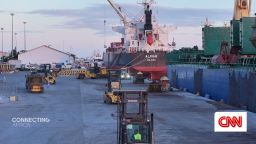Some airlines have experienced delays this weekend after an Alaska Airlines flight was forced to make an emergency landing Friday when a panel and window blew out of the Boeing 737 MAX 9 aircraft.
The incident has led to a federal investigation, and a number of airlines have grounded portions of their fleets for safety concerns. With snow battering parts of the northeast and more on the way, weather-related setbacks could also exacerbate air travel holdups.
On Saturday, the Federal Aviation Administration ordered airlines to ground many of their Boeing 737 MAX 9 planes for inspection. The FAA said its directive will impact 171 planes around the world. Even though some of the affected airlines’ fleets comprise hundreds of planes, temporary flight suspensions can still put strain on travelers as operators scramble to fill scheduling holes.
Rescheduling depends on a variety of factors. Airlines with larger fleets will generally have an easier time shuffling aircraft around to meet customer demand. Airlines with smaller fleets and airlines relying more heavily on the affected planes could find it more difficult. Location can also play a role. Airports capable of supporting a larger number of aircraft are more likely to have spare planes to replace the grounded ones.
Alaska Airlines temporarily grounded its MAX 9 fleet and said it was inspecting the plug doors on all its jets. The “plug door” refers to a portion of the plane’s fuselage the manufacturer can put in place instead of an emergency exit door.
As of Saturday evening, the airline said it has canceled 160 flights, “affecting roughly 23,000 guests.” While it is working with affected customers, the airline estimated “the disruption (will) last through at least mid-week.”
On Sunday, United Airlines said 180 of its 265 scheduled flights were canceled, but that it managed to save 85 flights by switching to different aircraft. United has 79 MAX 9 aircraft in its fleet, and all of them are being inspected to comply with the FAA.
“We are working with customers to re-accommodate them on other flights,” the company said in a statement.
Turkish Airlines said it has five MAX 9 aircraft in its 440-plane fleet and told CNN it is conducting a “precautionary examination” of these planes. “Until the technical investigation process is completed and the measures requested by the authorities are implemented, Turkish Airlines has decided to withdraw … MAX 9 aircraft in its fleet from operation at the first airport they land at,” spokesperson Yahya Ustun said in a statement.
Panama-based Copa Airlines said it has suspended the 21 MAX 9 planes according to the FAA’s directive. “Copa has initiated the necessary technical inspections and expects to return these aircraft safely and reliably to the flight schedule within the next 24 hours,” the airline said Saturday in a statement. “The airline’s team is working to minimize the impact on our passengers, although some delays and cancellations are expected due to this situation beyond the airline’s control.”
Aviation trial attorney Robert Clifford told CNN this incident will have consequential reputational repercussions for Boeing and will likely be on the hook to pay airlines for lost revenue.
“(Boeing) has to stop giving lip service to the idea that they put safety over profits because right now it looks like they put … speed to the marketplace over safety,” he said. “They put the need to have a competitive advantage against Airbus over safety.”
Boeing and Airbus together own more than 90% of the commercial plane market share.
Boeing has not responded to CNN’s request for comment.
Clifford is the lead counsel for the pending civil litigation against Boeing for the 737 MAX 8 flight that crashed in Ethiopia in March 2019, killing all 157 people on board. That crash eventually led the FAA to ground all 737 MAX planes for 20 months, alongside dozens of other countries across the globe. While the cause of the MAX 8 crash was a software issue rather than the structural malfunction that led to the Alaska Airlines incident, according to Clifford this incident still raises important public safety questions.
“This incident with the Max 9 should force the aviation community, particularly government regulators, to determine if allowing the Boeing Max 8 was allowed to fly again too hastily in Boeing’s efforts to get those planes back in the air,” he said, noting the repercussions were relatively minor because the plane was only 16,000 feet in the air. “If something like this happened at 30,000 feet, everyone would perish,” he added.
Clifford said the immediate action taken by the FAA and airlines to ground the flights means the operators and regulatory bodies are focusing on whether “there is a defect in the fleet of Boeing 737 Max 9 plug structures. The government clearly doesn’t want to repeat the tragedy that occurred with the Max 8. The potential for further problems cannot be understated.”
This story has been updated with additional information.
CNN’s Sara Smart, Sharif Paget, Pete Muntean, Raja Razek contributed to this report.









